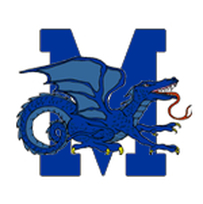Assembling a Bibliography
FORMAT OF BIBLIOGRAPHY
At the end of your paper, you include a bibliography, a list of the sources you used to write your paper. Your entire paper, including the bibliography, must be formatted according to an approved style. Many formatting styles exist, but you will follow the one your teacher assigns. Some formatting styles include Modern Language Association (MLA), American Psychological Association (APA) and Chicago. In the past, the subject of the paper determined the style a student used; but these traditional rules seem to be shifting. Your English teacher may direct you to use APA style instead of the usual MLA for humanities. As stated previously, you always follow the directives of your teacher in writing your research paper.
When you format the citations for your bibliography, you will need to alphabetize them, punctuate them correctly, and, if using MLA, use overhanging indent (the first line starts at the margin, the rest of the citation is indented).
Bibliographies contain all the sources you used for your paper–books, DVDs, magazine articles, websites. If you mention an author or source in your paper, it must appear in your bibliography. If no author is given for an article or website, etc., alphabetize by the article or website’s title. If this title begins with a, an, the, go to the next word to alphabetize.
Every idea that is not from you needs to be cited. If you need to cite a different kind of source, you can look at Purdue University’s Online Writing Laboratory (OWL) or, in printed form, a manual of style; MLA also has a website. In addition, online sites exist for citing sources electronically, for example, MyBib, Easybib, or Noodletools. However, when you use your source, you need to keep a careful record of the publication information so you can plug in that information on these electronic sites. Although the citation feature on databases and electronic citation generators are a help when compiling a Works Cited page, you need to check carefully the results. Database citations are mostly correct, but sometimes have errors in capitalization and punctuation; electronic citation generators sometimes sometimes do not include information the teacher requires like an Access Date for online work.
ABRIDGED MLA9 CITATION GUIDELINES
MLA9 papers are double spaced in 12 point, legible font. (Check with your teacher about the legible font.) The bibliographic citations on the Works Cited page are listed in alphabetical order and start at the left margin. Any following lines have a hanging indent. Do not separate the bibliographic citations into categories (e.g., websites together, books together, etc.).
- If you have more than one author, list the second author with his/her first name, then last name.
- If your book is illustrated, copy the illustration information from the title page exactly as it appears.
- For example, Pictures by Paul Zelinsky; Photographs by Ansel Adams, etc. If your book has more than one publishing city, pick the one closest to where you live; pick the most recent publication date.
Book with one author: Only the first author’s name is inverted. Second is formatted normally.
Author’s last name, author’s first name. Title. Publisher, Publishing year.
Book with an editor:
Last name, First name, editor. Title. Publisher, Publishing year.
Book with one chapter in a book with an editor:
Last name, First name. “Title of Essay.” Title of Collection, edited by Editor’s Name(s),
Publisher, Publishing year, Page range of entry.
Encyclopedia or Dictionary (unsigned):
“Term looked up.” Encyclopedia. # ed. Year.
Periodical (not digital):
Journal
Author’s last name, author’s first name. “Title of Article.” Periodical, vol.–, no.–, Date,
pp. —.
Magazine
Author’s last name, author’s first name. “Title of Article.” Periodical, Day Month Year,
pages.
Newspaper
Author’s last name, author’s first name. “Title of Article.” Periodical, Day Month Year,
pages.
(The page numbers in newspapers often are prefaced by a letter indicating the section of the newspaper, for example, p.A1).
Online database:
Author/editor name(s). “Name of article.” Magazine or Journal, vol. –, no.–, Date,
pp. (if given).
Name of Database, URL/DOI. Accessed date.
Website:
Author (if known). “Title of Article.” Website Name. Date of article, Name of
Organization sponsoring web site (if different). URL (no https:// or http://).
Accessed date.
Interview:
Person interviewed. Personal interview. Date
Video or DVD:
“Title of Episode.” Year of performance. Title of video, produced and
directed by ———-. Number of min. Production company. Year dvd issued.
Accessed date.
Youtube Video:
Creator’s last name, first name. “Title of Video.” YouTube, uploaded by source, Day Month
Year, URL without http/https.
